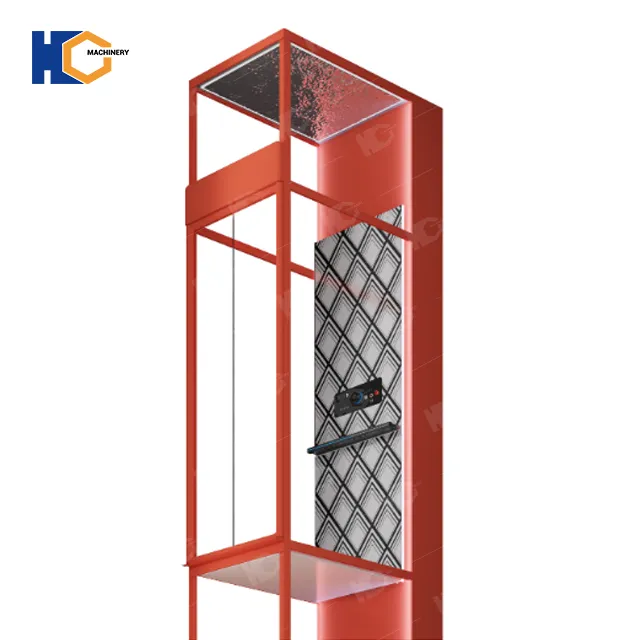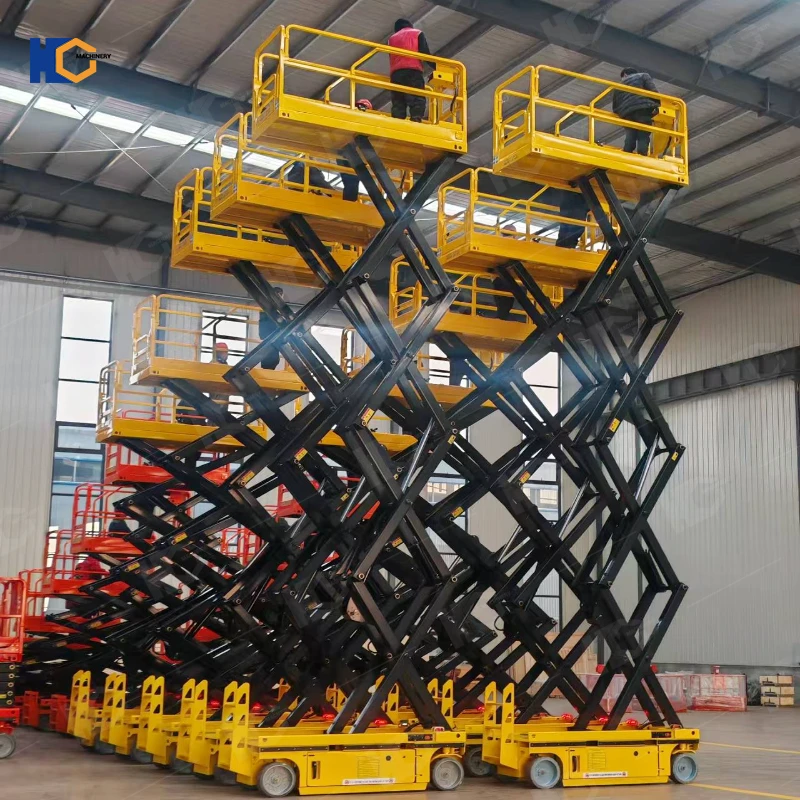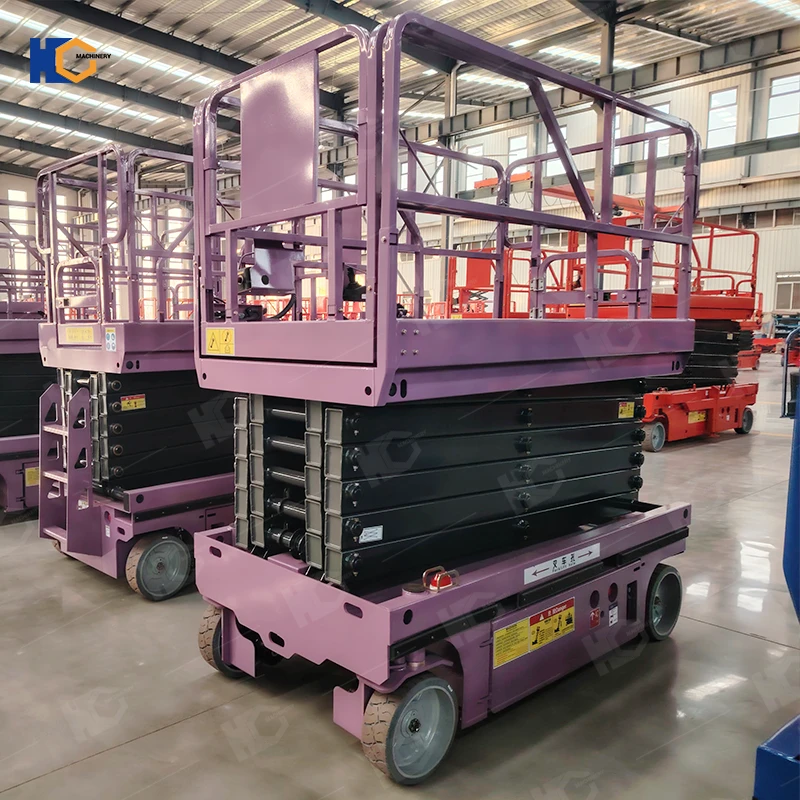Elevators have become an indispensable part of modern urban infrastructure, facilitating vertical mobility in buildings of varying heights. Among the different types of elevators, hydraulic and traction elevators stand out as two prominent technologies, each offering distinct advantages and applications. This essay delves into a comparative analysis of hydraulic and traction elevators, exploring their mechanisms, advantages, disadvantages, and suitability for different environments.
Hydraulic Elevators: Hydraulic elevators operate on the principle of fluid mechanics, utilizing hydraulic cylinders to lift the elevator car. These cylinders are filled with hydraulic fluid, typically oil, and connected to a pump system. When the elevator is called, the pump pushes fluid into the cylinder, causing the piston to rise and lift the car. Conversely, when the elevator descends, the fluid is released from the cylinder, allowing the car to lower.

Hydraulic elevator
Advantages of Hydraulic Elevators:
1. Cost-Effectiveness: Hydraulic elevators are often more economical to install compared to traction elevators, especially in low-rise buildings.
2. Smooth Ride: Hydraulic systems offer a smooth and quiet ride, making them suitable for residential buildings where noise levels are a concern.
3. Space Efficiency: Hydraulic elevators require less overhead space for installation since they do not rely on counterweights or machine rooms, making them ideal for existing buildings with limited space.
Disadvantages of Hydraulic Elevators:
1. Limited Height: Hydraulic elevators are not well-suited for tall buildings due to height restrictions imposed by the length of hydraulic pistons.
2. Environmental Concerns: Hydraulic elevators utilize hydraulic fluid, which can pose environmental risks if leaked or improperly disposed of.
3. Maintenance Requirements: Hydraulic systems require regular maintenance to ensure optimal performance and prevent issues such as fluid leaks or cylinder wear.
Traction Elevators: Traction elevators operate on the principle of friction between the elevator car and steel ropes or belts attached to a motorized pulley system. When the elevator is called, the motor drives the pulley, causing the ropes or belts to move and lift or lower the car accordingly.
Ideal Use Cases:
Low-rise Commercial Buildings:
Small offices, retail stores, and hotels up to 5-7 floors.
Hospitals:
Suitable for patient transport due to their ability to carry heavy loads smoothly.
Warehouses:
Ideal for freight elevators because of their high load capacity.
Advantages of Traction Elevators:
1. Height Capability: Traction elevators are well-suited for tall buildings, as they can efficiently transport passengers to great heights using multiple ropes or belts.
2. Energy Efficiency: Traction elevators are generally more energy-efficient than hydraulic elevators, especially regenerative drive systems that capture and reuse energy during descent.
3. Smooth Acceleration: Traction systems offer precise control over acceleration and deceleration, providing a smoother and more comfortable ride for passengers.
Disadvantages of Traction Elevators:
1. Initial Cost: Traction elevators typically have higher upfront costs compared to hydraulic elevators, primarily due to the need for a machine room and counterweight system.
2. Space Requirements: Traction elevators require dedicated machine rooms and overhead space for counterweights, making them less suitable for buildings with space constraints.
3. Noise Levels: Traction elevators may produce more noise during operation compared to hydraulic elevators, which can be a concern in residential or noise-sensitive environments.
Specification
Specification | Hydraulic Elevator | Traction Elevator |
Mechanism | Piston and cylinder system powered by hydraulic fluid | Steel ropes or belts over a pulley connected to an electric motor |
Speed | Up to 150 feet per minute (0.75 m/s) | Up to 500 feet per minute (2.54 m/s) or more |
Travel Distance | Up to 60 feet (18 meters), typically 2-7 floors | Up to 2000 feet (600 meters), suitable for buildings over 10 floors |
Load Capacity | Typically up to 10,000 lbs (4500 kg) | Typically up to 6,000 lbs (2700 kg), can be customized higher for special applications |
Installation Location | Machine room at the bottom of the shaft | Machine room at the top of the shaft or machine-room-less (MRL) |
Initial Cost | Lower installation cost ($40,000 - $100,000) | Higher installation cost ($80,000 - $150,000) |
Maintenance Cost | Moderate, higher due to potential oil leaks | Lower, but requires regular maintenance ($150 - $200 per month) |
Energy Efficiency | Higher energy consumption | More energy-efficient |
Ride Quality | Smooth but slower | Smoother and faster |
Environmental Impact | Potential for hydraulic oil leaks | More environmentally friendly, no hydraulic fluids |
Noise Level | Generally quieter | Can be noisier due to mechanical components |
Emergency Operation | Lower risk of free-fall, uses hydraulic pressure | Requires safety brakes to prevent free-fall |
Ideal Applications | Low-rise buildings (2-7 floors), hospitals, warehouses | High-rise office buildings, residential complexes, hotels |
Ideal Use Cases
High-rise Office Buildings:
Skyscrapers and office towers where speed and efficiency are paramount.
Residential Buildings:
Mid to high-rise apartment complexes where a smooth and quiet ride is desirable.
Hotels and Commercial Spaces:
Where the rapid movement of guests and employees is necessary over multiple floors.
Choose Hydraulic Elevators
For low-rise buildings up to 5-7 floors.
When budget constraints are significant.
For applications needing high load capacity, such as hospitals or freight elevators.
Choose Traction Elevators
For mid to high-rise buildings exceeding 10 floors.
When speed and energy efficiency are critical.
For environments where a smooth and quiet ride enhances user experience, such as residential and high-end commercial buildings.
Understanding the specific needs of the building and its users is essential to making the right choice between hydraulic and traction elevators.
Conclusion: In conclusion, both hydraulic and traction elevators offer distinct advantages and disadvantages, making them suitable for different applications based on building height, space availability, budget constraints, and environmental considerations. Hydraulic elevators excel in low to mid-rise buildings where cost-effectiveness and space efficiency are paramount, while traction elevators are preferred for tall buildings requiring efficient vertical transportation and energy savings. Ultimately, the choice between hydraulic and traction elevators depends on the specific requirements and constraints of each building project.
Company Introduction: JNHC Lift
JNHC Lift is a prominent manufacturer of hydraulic and traction elevators based in China. Renowned for their high-quality products and innovative designs, JNHC Lift caters to a global market, providing customized elevator solutions to meet diverse customer needs.
Their hydraulic elevators are ideal for low to mid-rise buildings, offering robust performance and heavy load capacity, making them perfect for hospitals and commercial spaces. On the other hand, JNHC’s traction elevators are suited for mid to high-rise buildings, delivering high speed and energy efficiency, which are essential for modern office buildings and residential complexes.
With a strong focus on safety, reliability, and customer satisfaction, JNHC Lift combines advanced technology with precision engineering to ensure top-notch elevator systems. Their commitment to excellence and competitive pricing makes them a trusted choice for clients seeking efficient and durable vertical transportation solutions.



